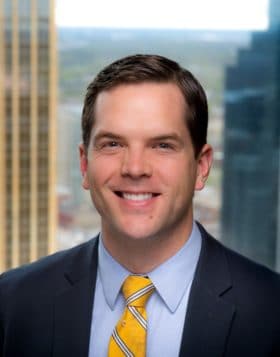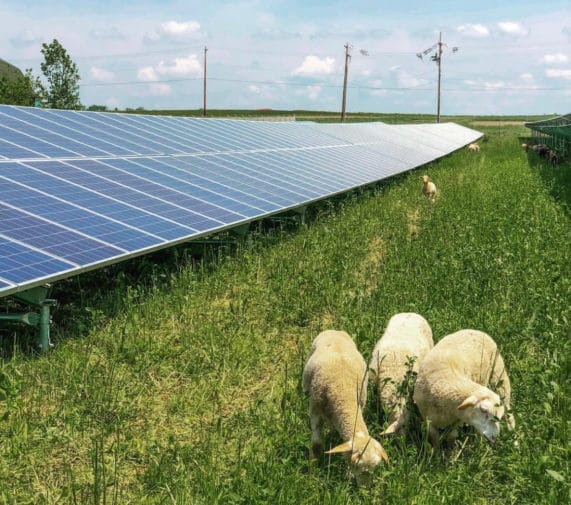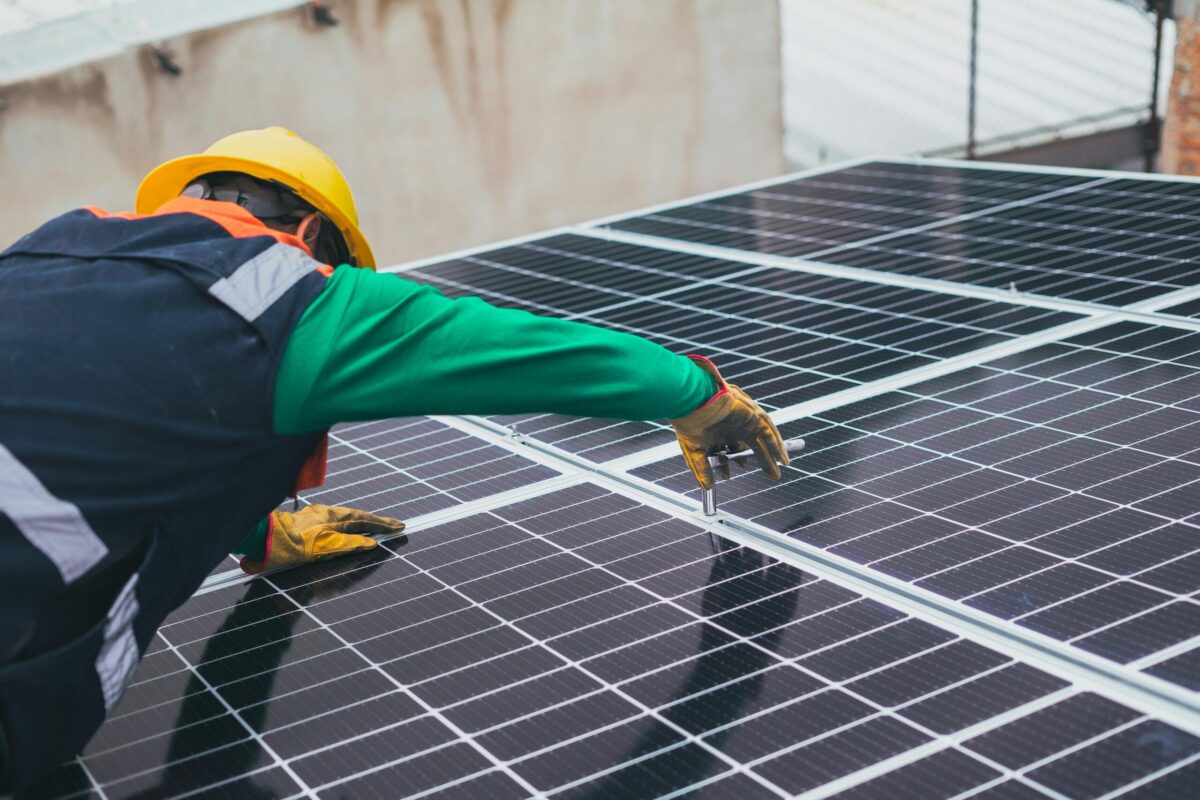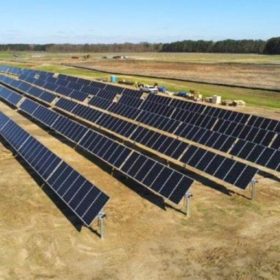
State and local officials in the Midwest have long attempted to preserve the valuable agricultural land and rural character for which the heartland is known. At times, these efforts have created real or perceived choices between farming and alternative uses of the land, often with well-intentioned policy creating hurdles for farmers seeking the highest and best use of their land. In recent decades, conversations in multiple Midwestern states over using agricultural land for energy production demonstrates this issue; whether it be for transportation fuels or electricity generation projects. Recently many farmers who want to diversify their revenue streams in an era of depressed commodity prices by leasing land for solar development have been deterred by regulations restricting development of agricultural land and programs that incentivize continued agricultural use. Some Midwestern states have noted the potentially stifling effects of these regulations and programs and are proactively working to find workable solutions and flexibility for landowners to more directly determine the highest and best use of their land.
In Michigan, for example, the Farmland and Open Space Preservation Program provides tax incentives to farmers who agree to maintain agricultural practices on their land for at least 10 years. This program was created in 1974 to ensure that productive agricultural land would remain in production even in the face of pressure from urban and suburban development. With some question surrounding whether solar was an agricultural practice such that a farmer who had entered her land in the program could lease the land to a solar developer, in 2017 Governor Rick Snyder issued a policy that stated commercial solar development was not compatible with the program. Thus, the farmers interested in hosting solar projects were left with a choice: forgo the opportunity to diversify their income at a time when commodity prices were down by staying in the program or paying back the previous seven years of tax credits plus six percent interest in order to exit the program.

In June, Governor Gretchen Whitmer reversed the policy and gave farmers the option to pause their participation in the program and take advantage of hosting a solar project. Under Governor Whitmer’s policy, farmers can enter into an amended Farmland Development Rights Agreement that extends their existing agreement for a period of time equivalent to the amount of time the land will be used to generate solar power combined with the remaining term of the agreement, resulting in no net change in the length of the original Farmland Development Rights Agreement. Tax credits cannot be claimed by the farmer from the time construction begins until all panels and structures are removed, at which time the land must be returned to agricultural use. This compromise allows landowners to keep the acres in the program, avoids associated overpayments or penalties, and provides farmers much needed flexibility to pursue solar options. In total, Governor Whitmer’s policy affords the flexibility to host solar projects to the owners of the 3.4 million acres enrolled in the program.
Further west in North Dakota, the state’s energy generation siting statute and implementing regulations restricted the development of new energy infrastructure, including solar, on prime farmland. Prime farmland had been designated as an “exclusion area” along with national parks, historical sites, and habitat critical to threatened and endangered species such that energy development was generally precluded from development in such areas. Although the North Dakota Public Service Commission had some flexibility to approve a project that had a “negligible” impact on prime farmland, the inclusion of prime farmland in the list of exclusion areas still embodied a hurdle to the development of energy on agricultural land and to solar in particular.
Earlier this year, the Public Service Commission pursued a change to the statute and rule that would remove prime farmland from the list of areas designated as exclusion areas. North Dakota Public Service Commission Chairperson Brian Kroshus said that the testimony from the late 1970s when the statute was enacted showed that the impetus behind the law was a desire to protect farmers from the encroachment of unwanted pipelines and electrical transmission lines, not to ensure that agricultural land be farmed in perpetuity to the exclusion of all other uses. This change to the North Dakota siting law and implementing regulation became effective in July.
Like Michigan, Minnesota has agricultural land preservation programs that preclude enrolled farmers from hosting solar projects, including the Metropolitan Agricultural Preserves Program, the Minnesota Agricultural Land Preservation Program, and the Green Acres Program. Farmers enrolled in the Metropolitan and Minnesota programs can terminate their participation in the programs, but such termination does not take place until eight years after a notice of termination is given. To exit the Green Acres Program, a farmer must pay back the deferred property tax assessment received during her time in the program and three years’ back taxes. As is clear by the extended timeline for terminating participation and financial penalty associated with doing so, Minnesota’s land preservation programs heavily restrict a farmer’s ability to take advantage of the need for land for solar development.
And like North Dakota, Minnesota state regulators have wrestled with restrictions on siting energy infrastructure on prime farmland that were not likely written with solar in mind. Minnesota’s state siting laws provide that no large electric generating plant be permitted in the state where the developed portion of the plant would include more than half an acre of prime farmland per megawatt of net generating capacity, unless there is no feasible and prudent alternative. For solar, which generally requires the use of several acres of land per megawatt, this metric is relatively unworkable in areas of the state where prime farmland is prevalent. While some developers have attempted to site their projects in areas with very low or no prime farmland, so doing would be very difficult in large swaths of the state like the southeast where prime farmland soils are relatively ubiquitous. This tension may be tested further as Xcel Energy, Minnesota’s largest electric utility, seeks to add several thousand megawatts of new solar by 2030.
It is not yet clear whether Minnesota or other Midwestern states will follow the lead of states like Michigan and North Dakota and take proactive steps to formally adapt agricultural and soil preservation rules and regulations to reasonably allow for solar development. Meanwhile, landowners will surely continue looking for useful ways to diversify their revenue streams and utilities, corporations, and residential electrical users will surely continue looking for the most efficient ways to add solar to the generation mix in the Midwest.
Sara Bergan is an energy law attorney at Stoel Rives LLP where she works with renewable energy and cleantech clients on project development, project finance and energy and environmental regulatory matters.
Thomas Braun is an environmental and energy attorney at Stoel Rives LLP whose practice includes advising clients in the energy, real estate development, and agribusiness industries on matters related to contaminated site remediation and redevelopment, land use and permitting, and environmental due diligence.
The views and opinions expressed in this article are the author’s own, and do not necessarily reflect those held by pv magazine.
This content is protected by copyright and may not be reused. If you want to cooperate with us and would like to reuse some of our content, please contact: editors@pv-magazine.com.








Do you know if the information provided above concerning paying back taxes and returning program payments also applies in Texas, more specifically to the Conservation Reserve Program?
With whom would I contact to get accurate information on this subject in Texas if I were contemplating leasing land currently in CRP to a solar development company? Any information would be most appreciated!
Looking for a company to lease my farm ground to. Near Ann Arbor Michigan.
Please edit this piece to correct Gov. Rick Snyder, not Rick Scott (that’d be Florida’s governor).